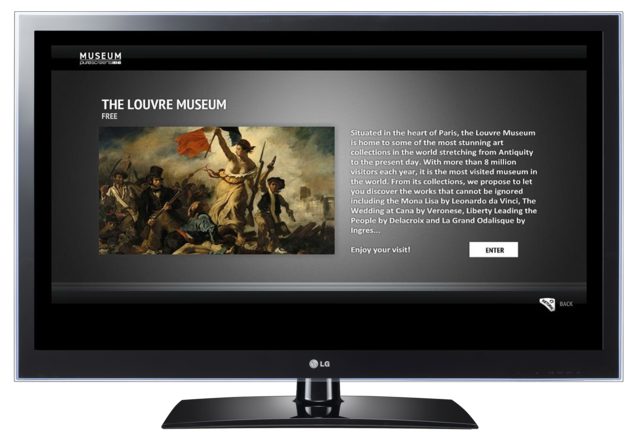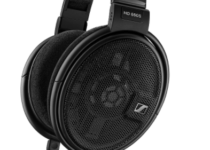Bluetooth 5.0 vs Bluetooth 4.2: What Does it Mean For Headphones?
Table of Contents
You’ve seen brand new headphones hyping on the Bluetooth 5.0 technology. It’s tempting to splurge on a brand new headphone equipped with an improved wireless chipset. Bluetooth 5.0 is definitely a major leap into the future since it was introduced in 2016.
However, you ought to understand what you’re buying into. Does getting a Bluetooth 5.0 headphone results in superior sound quality? Or how about the promises draining less battery from the headphone?
Let’s get down to the core of what Bluetooth 5.0 is all about and how does it fare against its predecessor.
Bluetooth Evolved
The first-ever Bluetooth device that hit the consumer market can be traced to 1999. It was the result of a decade long research for a wireless alternative to the RS232 standard. Bluetooth communications occur on the 2.4GHz radio wave spectrum and the standard is controlled by the Bluetooth Special Interest Group (SIG).
If you spent your teens during the early 2000s, you may have experienced how Bluetooth headsets start penetrating the mobile phone and computer market. By using a Bluetooth chipset, wireless communication can be established over these devices, which used to operate on cable.
Since then, Bluetooth has gone through multiple iterations, with various improvements introduced throughout the years. One notable milestone in the development of Bluetooth is the introduction of the Low Energy (LE) feature in 2011. It was introduced in Bluetooth 4.0, where communications could take place at a higher rate, greater distance and minimal power consumption.
Bluetooth LE continues to evolve, with significant security and speed improvements in the 4.2 version. It becomes a popular standard for wireless headphones and the popular Apple’s iPhone 6.
The spur for Bluetooth development is driven by the Internet of Things (IoT). IoT devices demand lower power, better range and secured wireless communication environment. Barely after 5 years when Bluetooth LE was first introduced, a major upgrade was released in the form of Bluetooth 5.0.
Differences Between Bluetooth 5.0 and Bluetooth 4.2
| | Bluetooth 5.0 | Bluetooth 4.2 |
|---|---|---|
| Data Rate | 2 Mbps | 1 Mbps |
| Range | 130 ft. | 33 ft. |
| Power | Very low power | Low power |
| Throughput | 255 bytes / packet | 31 bytes / packet |
| Dual Audio | Yes | No |
As with all technological standards, a leap on the decimal in the version implies that major improvements are made. The same goes for Bluetooth 5.0 and Bluetooth 4.2 Here is how immense the difference between both standards.
Data Rate
Bluetooth 4.2 supports up to 1 Mbps of data transfer. The limit is broken by Bluetooth 5.0, with its capacity of handling 2 Mbps of the transfer.
Range
You’ll get up to 33 ft in an indoor environment with Bluetooth 4.2 but Bluetooth 5.0 has a max distance of 130 ft. That’s a 4x increase in transmission range.
Power
Bluetooth 5.0 is also considerably less power-hungry compared to Bluetooth 4.2, which is already a Low Energy enhancement.
Throughput
Bluetooth devices transmit data in packets. In Bluetooth 4.2, only 31 bytes of messages are transmitted while this is expanded to 255 bytes in Bluetooth 5.0. The increase in message size means a higher throughput for Bluetooth 5.0.
Dual Audio
Tinking of sharing your favorite tune with your spouse, the Bluetooth 5.0 has a really cool feature for that. Known as Dual Audio, it allows you to connect to two headphones from a single device.
What Can You Expect From A Bluetooth 5.0 Headphone?
Headphone brands are quick to tap into technological change and start manufacturing wireless headphones with Bluetooth 5.0 chipsets. But as a consumer, are there any immense changes in terms of audio experience?
First of all, you’ll need a Bluetooth 5.0 enabled audio player in order to reap the benefits of having a Bluetooth 5.0 headphone. With a Bluetooth 5.0 connection, you’re able to pick up stable audio signals even when you’re at the other end of the living room (as long as it’s within 130 ft).
There’s also lesser frustration in charging the wireless headphone, as the extra-low power consumption means a longer battery lifespan. TaoTronics’s ANC headphone, which is built with a Bluetooth 5.0 chip, allows up to 40 hours of playtime.
Despite these nifty improvements, true audiophiles are concerned about the improvements in sound quality in Bluetooth 5.0, if any.
Here’s the bad news.
A Bluetooth 5.0 headphone will NOT result in better audio quality. Sound quality is dependent on the codec used in compressing the audio file or data into smaller packets. Popular audio codecs are aptX, LDAC, and SBC. These codecs often have a transfer rate between 200 to 600 kbps, with the LDAC clocking at 990 kbps with its fastest option.
Considering that Bluetooth 4.2 has a data rate of 1 Mbps and Bluetooth 5.0, 2 Mbps, both standards are more than sufficient to handle even the fastest codec. Therefore, you won’t be experiencing any sort of improvements in sound quality with Bluetooth 5.0, unless a new codec is introduced.
Can You Use A Bluetooth 5.0 Headphone With A Bluetooth 4.2 Smartphone?
If you’ve got a Bluetooth 5.0 headphone, you’ll have no problem pairing it with a Bluetooth 4.2 smartphone. Backward compatibility is a trait in Bluetooth 5.0 which allows the latest version to work with Bluetooth 4.0, 4.1 and 4.2
However, pairing a Bluetooth 5.0 headphone with a Bluetooth 4.2 smartphone means the connection will operate on the 4.2 standards. The headphone will operate on the older technology, which results in higher power consumption, lesser range, and slower data rate.
If you’ll want to enjoy the enhanced features of Bluetooth 5.0 headphones, you’ll need to get a Bluetooth 5.0 smartphone. Samsung Galaxy 9, Google Pixel 3, Apple iPhone X and Nokia 8 are some of the latest models with Bluetooth 5.0 capability.
Should You Buy A New Bluetooth 5.0 Headphone?
Here’s the million-dollar question that begs an answer and it depends.
If you’re happy with the current headphone, which runs on an older version of Bluetooth, then stick with it. Getting a Bluetooth 5.0 headphone doesn’t make the music sounds better. The same applies if you’re still using a Bluetooth 4.2 smartphone, which will limit the features even with a Bluetooth 5.0 headphone.
However, if you’re frustrated with how often you need to recharge your headphone, particularly with a deteriorating battery, it’s worth considering a Bluetooth 5.0 replacement. Be sure to evaluate each headphone as Bluetooth 5.0 is still relatively new even though it’s rolled out in 2016.


